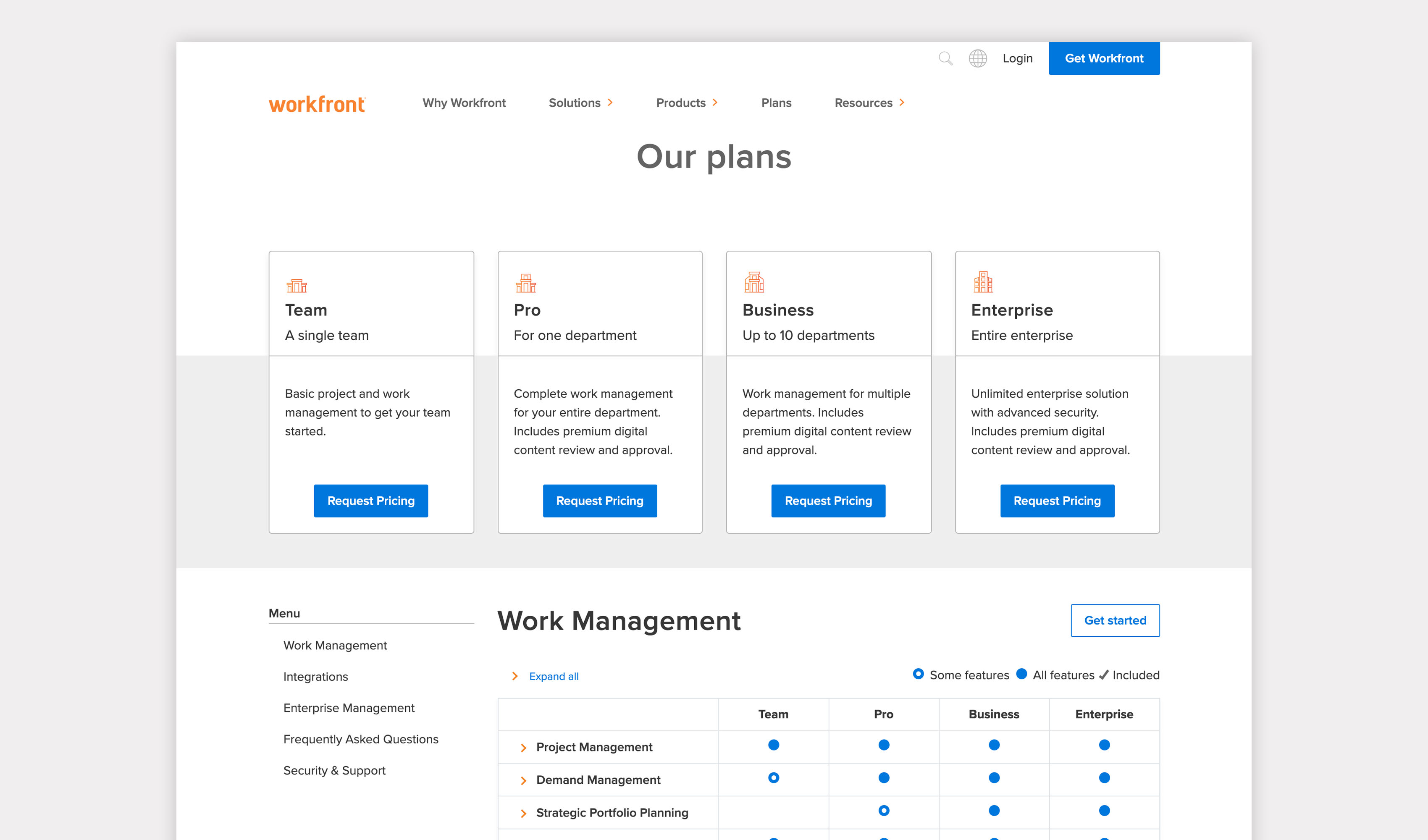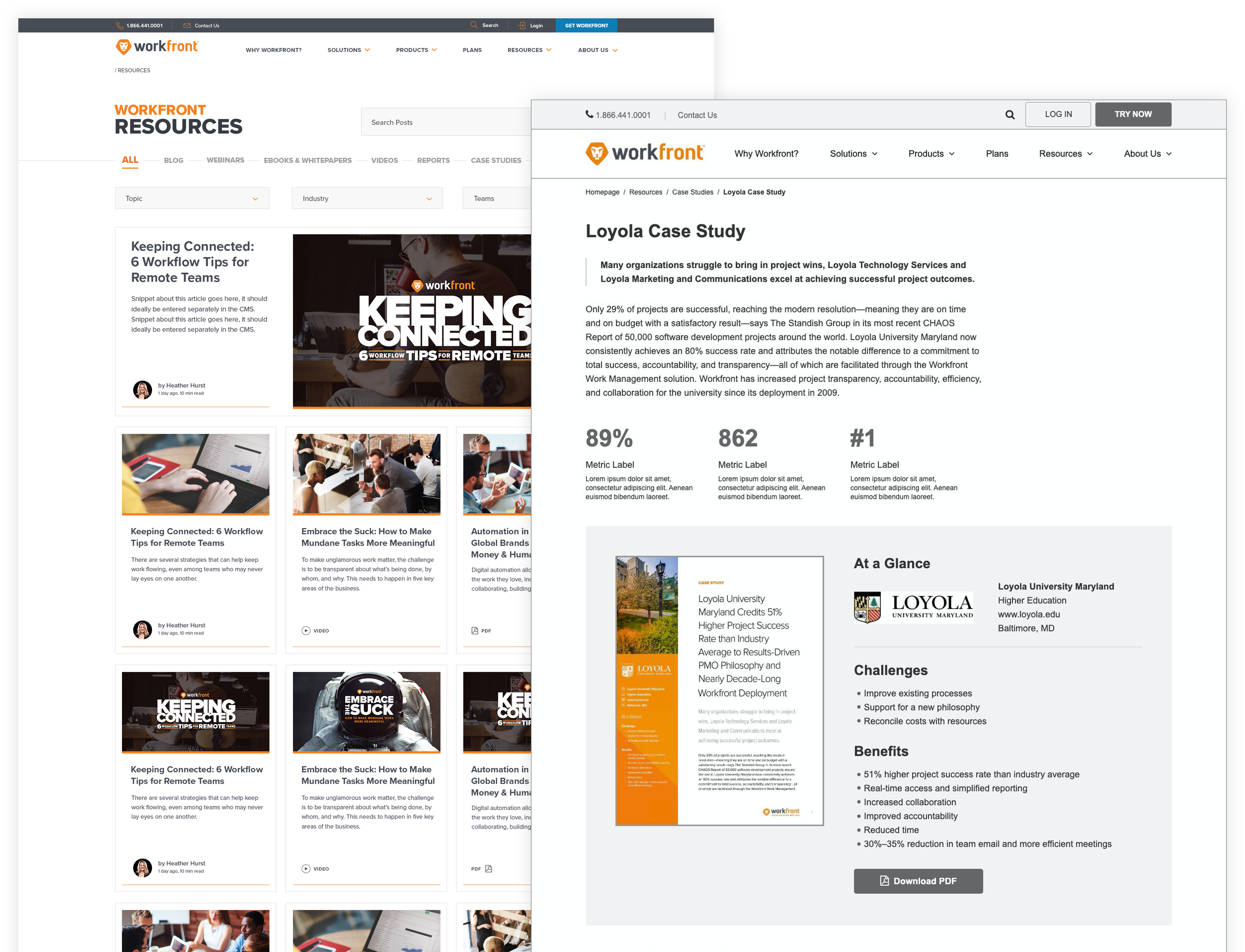1. Context & Problem
- Workfront offers a project management tool for small and large teams of professionals.
- The website has grown organically over the years, accumulating multiple inconsistent visual styles and content treatments.
- Additionally, a general lack of knowledge about how prospects become new customers misinformed what content to prioritize in their website.
- Therefore, we were asked to redesign the website to find better ways to support the prospect conversion experience.
2. What We Did
- Interviewed new customers with fresh memories about their search, vetting and implementation experience.
- Affinity analysis of customer narratives.
- Journey mapped findings from interviews.
- Website redesign.
3. Key Findings
- A major part of finding alternative solutions is self-research and comparison, relying heavily on review articles, industry reports, case studies, tradeshows and product websites.
- Products are extremely hard to compare due to their complexity and differences in labels and terms used.
- Licensing options are hard to comprehend without guidance due to the customization required for each customer.
- Handoff to the implementation team is inefficient since new members have to learn large amounts of information in a short period of time.
- Time is of the essence during implementation, customers expect fast response times, a hands-on attitude and training material custom to their workflow.

4. Recommendations
Map content to match the user’s mental state through a conversion funnel.
- Present user pains to touch a nerve with them.
- Offer key aspects of the product as solutions to the pains.

Distinguish products from each other to present clear offerings and integration options.
- Clear product hierarchy allows faster comprehension while exploring product options.
- Differentiate main products vs smaller tools and plugins.
- Provide a library of integrations for users to gauge how Workfront fits into their existing environment.

Prioritize comparison of offerings by listing specifications side by side.
- Clear plan options allow faster comprehension during consideration.
- Distill specifications to those most needed by users.
- Provide an avenue for users to contact a sales representative.

Expand and reformat case studies to highlight important challenges, benefits and metrics.
- Summarize key challenges and results to entice pdf downloads.
- Showcase prominent client logos whenever possible.

5. Challenges & Learnings
Companies performing seemingly well in their industry can still benefit from user research. Our findings would have not come to light without asking and mapping the experience of the customers. More importantly, this process increased the trust between customers, the client, and us. All parties moved as one unit to recall memories, emotions and uncover issues that would otherwise be left unnoticed or labeled as unimportant.
A secondary effect of the research was the alignment of priorities across 10+ internal stakeholders. The project had started with each party outlining their needs and requirements which inevitably resulted in an unfocused, conflicting and uncoordinated list. The research stripped such a list and shifted all stakeholders to think and speak for the benefit of the customer.
6. Reference Material
For a deep dive into the project, please reference the following links:
